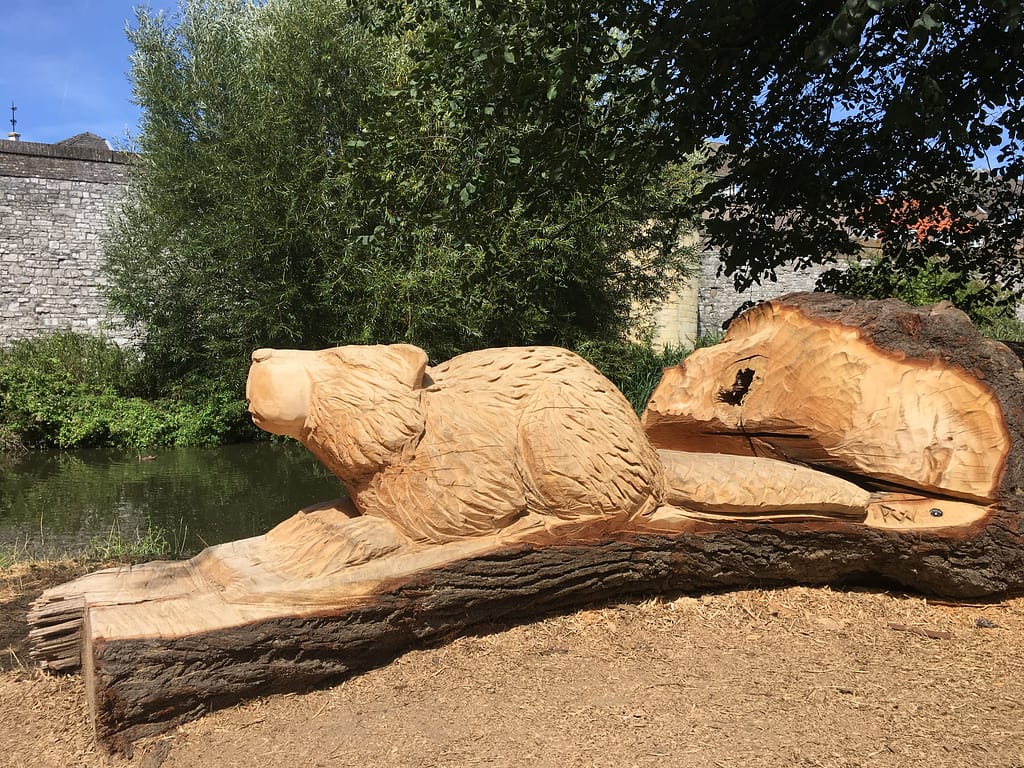Beaver
Explanation
This beautiful tree statue of a beaver is by artist Roel Wijlick. It emphasises the presence of beavers within the Tapijn grounds, which is nice, because few people get to see them in the wild. There is no beaver lodge within the Tapijn grounds, so beavers do not use Tapijn as their residence. However, they do visit when out looking for food, which is usually at night. There are beaver lodges along the Meuse and in the Jeker valley. It seems they sometimes leave the water during their quest for a quick snack within the Tapijn grounds. Evidence of this is the willow that stands next to the bridge to the Nieuwenhofpoortje. At the end of October 2017, it was gnawed on by beavers during a night. During the spring, beavers also frequented the banks of the Jeker within Tapijn, as we were able to record several times with our wildlife camera. These images also show a beaver entering the water with a large branch.
Relationship with humans
Why we do what we do
Beavers can be admired in Maastricht again thanks to their reintroduction in Wallonia. Without humans, there might not have been any beavers here (yet). It is nice to see that beavers are not only thriving in nature reserves, but also in cities like Roermond and Maastricht. One of the reasons that beavers are doing so well is their lack of natural enemies, which include wolves and otters (that kill young beavers in the nest). Beavers may be inconvenienced by dogs, but because beavers are mainly active at night, dogs are probably a limited danger to the beaver. Because beavers are territorial, they create their own upper limit, as it were. Once a family takes over an area, they will not permit or tolerate any new beavers within their territory.
We haven’t seen him on Tapijn for a few months, but now he looks again nice. This beaver nibbled for a long time at the willow tree next to the bridge at the Nieuwenhof gate. Would that willow make it?
